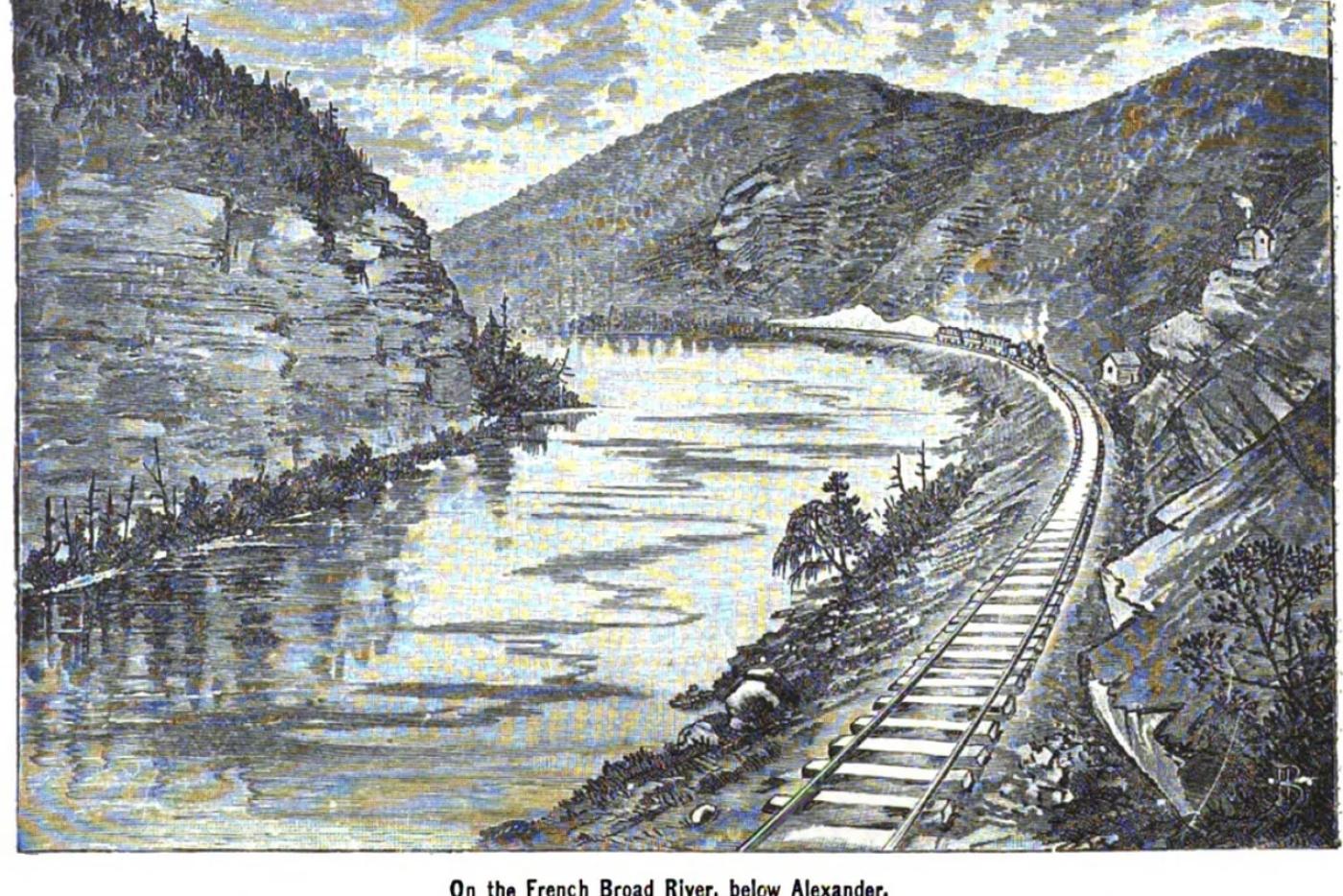Author: Jonathan Williams
The Mountain Park Hotel: To New Heights By Rail
After the Civil War, an ever-growing network of rails and wires began stitching the country together more tightly than before. Held back for years by warfare and party politics and one outlandish incident in which fraudsters made off with four million dollars (in 1869 money) in the dead of night, the Western North Carolina Railroad was finally dragged over the Blue Ridge in 1881 by Virginian investors using black convict labor. By the next spring, the link over the mountains had been finished by way of the old turnpike route through Marshall and Hot Springs to Paint Rock. The effect was immediate. Asheville quintupled in size between 1880 and 1890 and developed a concentration of wealth. As early as 1883, visitors reported that “With every summer new houses are growing into form on the many charming sits for the display of costly residences… Asheville will, at no late date, be spoken of as the city of retired capitalists.”[1] Now separated from hot, smoke-choked urban summers by a few hours’ train ride rather than days in a bone-jarring stagecoach, the resort at Warm Springs stood to profit, and profit immensely, from the flood of moneyed newcomers.
The Patton building burned in 1884. Since the Civil War, the establishment had belonged to James H. Rumbough, originally from Tennessee, who had previously operated a Greeneville-to-Greenville stagecoach line that stopped at Warm Springs for breakfast. After the fire, the hotel was bought by a syndicate of New York investors called the Southern Improvement Company, who constructed the most spectacular building on the site, the Mountain Park Hotel. It was in the course of construction that a new spring with warmer water was discovered, prompting the company to rebrand the entire town as Hot Springs.
References:
[1] Zeigler and Grosscup, 341–2.

